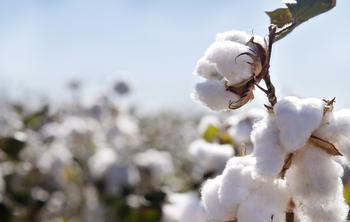 In recent years, the country has stockpiled large quantities of cotton, all of which are stockpiled in local cotton stockpiles and specialized cotton warehouses. Reserve cotton is stored in the warehouse for at least six months, and most of it is stored for three to five years. The natural variability that these cottons can't prevent during storage and storage must be focused on the causes of variation in reserve cotton.
In recent years, the country has stockpiled large quantities of cotton, all of which are stockpiled in local cotton stockpiles and specialized cotton warehouses. Reserve cotton is stored in the warehouse for at least six months, and most of it is stored for three to five years. The natural variability that these cottons can't prevent during storage and storage must be focused on the causes of variation in reserve cotton. 1. Influence of storage conditions. Although the state has made basic requirements for the storage conditions of warehouses, some warehouses have experienced some unsatisfactory practices in the storage process because of limited personnel, space, and economic conditions. If the storage outside the library is not timely stamped with linoleum cloth or rain leaks from the warehouse, the cotton is dripping rain; the staff is nervous or lack of sense of responsibility, and the daily inspection of the library is not done, the temperature and humidity are measured, and the temperature and humidity inside and outside the library are changed according to the weather. Differences, timely measures such as ventilating, wetting and dampening or closing the warehouse, etc.; can not ensure that the temperature in the warehouse is kept below 30°C, the relative humidity must not exceed 70%, and the cotton moisture regain no more than 10%.
2. The effect of temperature and humidity. Under normal circumstances, the new cotton with a moisture regain of no more than 10.5% is placed in a warehouse that meets the reserve requirements. Normally, no natural variation will occur before the high temperature in summer. However, after the arrival of the summer rainy season, especially when the summer temperature exceeds 35°C, and cotton absorbs moisture, the reflectivity and yellowness of cotton will naturally mutate and directly affect the grade of cotton. In general, the average can be reduced by one level during a cotton year. The specific performance of cotton above grade 3 is relatively stable and less variable; cotton below grade 4 is inherently unstable, prone to natural variations, and has a greater degradation; the rate of variation is initially slower, and the variation in the middle is accelerated. After a certain period of time, the rate of mutation slowed again.
3. The influence of microorganisms. Microorganisms are attached to the cotton. In a humid environment, the microorganisms reproduce rapidly and continuously excrete cellulase and acid, resulting in deterioration and discoloration of the cotton. When the temperature exceeds 35°C and the humidity exceeds 70%, the cotton will soon grow into "pityrous" and will mutate into yellow-stained cotton within 3 years.
4. The impact of maturity. During the inspection process, it was found that cotton varieties with higher maturity indices were relatively less variable and those with smaller cotton maturity values ​​were more variable. The specific performance of the cotton above level 3 is small, and the level 4 is more variable.
5. Effect of storage time. The longer the cotton reserves, the more the cotton will lose its original luster, making cotton more and more yellow. Therefore, the longer the storage time, the greater the variation in cotton.
6. Plastic package impact. During the inspection process, it was found that the plastic bag cotton that had rained had a large variation. In order to reduce costs, some manufacturers use unreasonable formulas and use recycled materials to produce weathered plastic packages and damaged packages. In addition, the air permeability of plastic packages is poor. Once rain and snow enter during transportation and storage, it is difficult for water to evaporate, resulting in mildew in the bales.
Polyester coated welding tarps no wax coating, no strong smell, highly waterproof. The fabric is more stable and not easy to shrink. The tear resistance is more than 2 times that of cotton canvas tarpaulins. Polyester Canvas is great for carport canopy, duck patio tarps and equipment tarps. The utility model can be used as an open storage stowage covering for the harbour and airport at the station. Temporary Tents can be built and crops can be used in the open air covering. Temporary sheds and temporary warehouses it also can be used for various construction sites such as the construction site electric power construction site.
Large Canvas Tarp,Outdoor Canvas Tarps,Polyester Canvas Tarps,Heavy Duty Canvas Tarps
Shandong Lufan Technical Textiles Co.,LTD , https://www.lufan-tarps.com